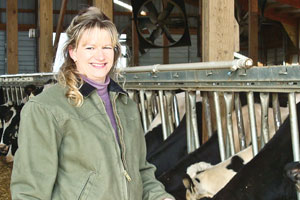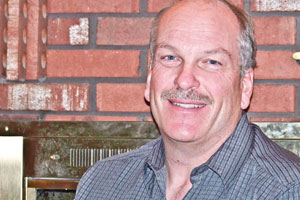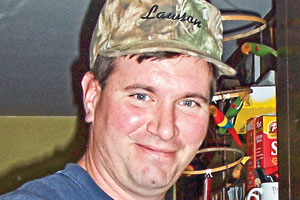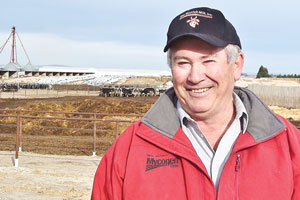In 2011, we’ll be taking a little different “twist” on this idea by following several producers throughout a complete silage season. Some responses will appear here in print, but additional responses will also be featured in this special “Silage Season” section online.
For this issue, we asked our featured producers to talk about things that went “right” or “wrong” with their silage in 2010 and their goals for 2011. Read their answers below and then think about your own response. I’d love to hear from you and have you contribute to this column, as well. What are your plans for 2011? Are you trying anything new or different? Let us know about this and any particular challenges with weather or pests in your area or anything else you’d like to share. E-mail your thoughts to editor@progressiveforage.com and tell us about your silage season.
 Chris Sukalski and Scott Reiland
Chris Sukalski and Scott Reiland
Reiland Farms • LeRoy, Minnesota
Our area had a perfect weather window for silage harvest last fall, coupled with ideal growing conditions all summer. We started hearing good things about the new-crop silage from other producers who were already starting to feed it. So we decided to change the use pattern on our silage pile and started feeding in November rather than waiting for full fermentation. The cows are responding, as we are up 5 pounds per cow per day. We feel we put away the best crop of silage in our lives. We’ll hope for similar results this year. We plan to invest in the newest technology, specifically BMR varieties that carry the Roundup Ready traits.
 Jeff Handschke
Jeff Handschke
Sugar Creek Dairy • New London, Wisconsin
Last year we got off to an early start and had great conditions into the first of June. It was a very rainy summer, so the later-planted crop struggled a little bit. The early crop yielded really well, but we did have a little trouble at harvest with the mud. The later crop was a little disappointing in grain-to-stover ratio, with a little less energy. For 2011, we’re looking at doing some 15-inch rows, perhaps, and probably some side-by-side rows about six inches apart. With increasing land rents, we’re trying to maximize our yields from the ground we farm.
 Keith Dawydko
Keith Dawydko
Anchor Farms, Inc • Clarence, New York
If we could photocopy 2010 and put it in 2011, I’d take it. It wasn’t a perfect year, but it was better than many others. We were a little on the dry side through the summer, but we got started early and had a wet spring, even a snowstorm in the middle of May. The summer was hot with lots of growing degree units. Had we had just a little more rain, it would have been a huge crop, but it was very good even without that. The fall was nice and dry and it came off really well. We did have a few problems with our fertilization in 2010, so we’ll really be paying more attention to that aspect during this next growing season and doing regular nitrogen testing.
 Ray Robinson
Ray Robinson
Moo Mountain Milk and East Ridge Milk • Burley, ID
Last season was challenging as we had unusually cool temperatures to contend with in our area. Our corn silage wasn’t able to reach its full maturity level by harvest, so it hasn’t been feeding quite as well as it has in the past. Ultimately we had to bring more dry corn into the ration to maintain the starch levels. On a positive note, we decided to lengthen the cut and that seemed to help improve silage quality. As we look to 2011 we’re hoping that better summer weather will result in a better corn silage crop.










